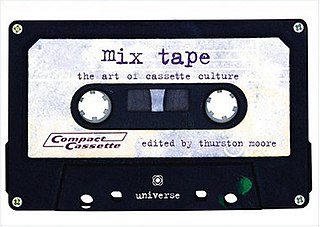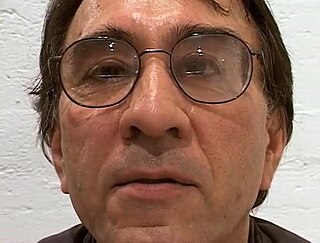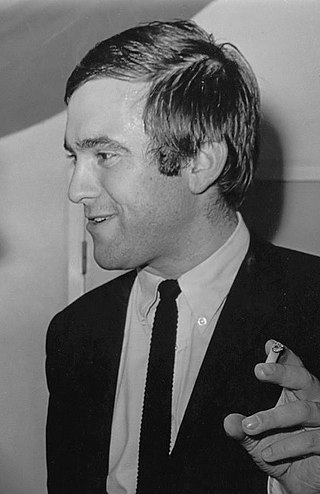
Dada or Dadaism was an art movement of the European avant-garde in the early 20th century, with early centres in Zürich, Switzerland, at the Cabaret Voltaire, founded by Hugo Ball with his companion Emmy Hennings, and in Berlin in 1917. New York Dada began c. 1915, and after 1920 Dada flourished in Paris. Dadaist activities lasted until the mid 1920s.

A found object, or found art, is art created from undisguised, but often modified, items or products that are not normally considered materials from which art is made, often because they already have a non-art function. Pablo Picasso first publicly utilized the idea when he pasted a printed image of chair caning onto his painting titled Still Life with Chair Caning (1912). Marcel Duchamp is thought to have perfected the concept several years later when he made a series of ready-mades, consisting of completely unaltered everyday objects selected by Duchamp and designated as art. The most famous example is Fountain (1917), a standard urinal purchased from a hardware store and displayed on a pedestal, resting on its back. In its strictest sense the term "ready-made" is applied exclusively to works produced by Marcel Duchamp, who borrowed the term from the clothing industry while living in New York, and especially to works dating from 1913 to 1921.
Conceptual art, also referred to as conceptualism, is art in which the concept(s) or idea(s) involved in the work are prioritized equally to or more than traditional aesthetic, technical, and material concerns. Some works of conceptual art may be constructed by anyone simply by following a set of written instructions. This method was fundamental to American artist Sol LeWitt's definition of conceptual art, one of the first to appear in print:
In conceptual art the idea or concept is the most important aspect of the work. When an artist uses a conceptual form of art, it means that all of the planning and decisions are made beforehand and the execution is a perfunctory affair. The idea becomes a machine that makes the art.

Harold Hart Crane was an American poet, best known for his only long poem, The Bridge. Inspired by T. S. Eliot, Crane wrote highly stylized modernist poetry, often noted for its complexity. He published poems to various literary magazines throughout his life, as well as two collections: White Buildings (1926) and The Bridge (1930). White Buildings helped to cement his place in the avant-garde literary scene of the time. In The Bridge, he tried to write an epic poem in the style of The Waste Land, that expressed a more optimistic view of modern, urban culture than the one that he found in Eliot's work. The Broken Tower (1932) was meant to be his last published poem. However, it only appeared in print following his death.
"The Red Wheelbarrow" is a poem by American modernist poet William Carlos Williams. Originally published without a title, it was designated "XXII" in Williams' 1923 book Spring and All, a hybrid collection which incorporated alternating selections of free verse and prose. Only sixteen words long, "The Red Wheelbarrow" is one of Williams' most frequently anthologized poems, and a prime example of early twentieth-century Imagism.

Barbara Guest, néeBarbara Ann Pinson, was an American poet and prose stylist. Guest first gained recognition as a member of the first generation New York School of poetry. Guest wrote more than 15 books of poetry spanning sixty years of writing. In 1999, she was awarded the Frost Medal for Lifetime Achievement by the Poetry Society of America. Guest also wrote art criticism, essays, and plays. Her collages appeared on the covers of several of her books of poetry. She was also well known for her biography of the poet H.D., Herself Defined: The Poet H.D. and Her World (1984).

Neo-Dada was a movement with audio, visual and literary manifestations that had similarities in method or intent with earlier Dada artwork. It sought to close the gap between art and daily life, and was a combination of playfulness, iconoclasm, and appropriation. In the United States the term was popularized by Barbara Rose in the 1960s and refers primarily, although not exclusively, to work created in that and the preceding decade. There was also an international dimension to the movement, particularly in Japan and in Europe, serving as the foundation of Fluxus, Pop Art and Nouveau réalisme.

Alison Knowles is an American visual artist known for her installations, performances, soundworks, and publications. Knowles was a founding member of the Fluxus movement, an international network of artists who aspired to merge different artistic media and disciplines. Criteria that have come to distinguish her work as an artist are the arena of performance, the indeterminacy of her event scores resulting in the deauthorization of the work, and the element of tactile participation. She graduated from Pratt Institute in New York with an honors degree in fine art. In May 2015, she was awarded an honorary doctorate degree by Pratt.

Fountain is a readymade sculpture by Marcel Duchamp in 1917, consisting of a porcelain urinal signed "R. Mutt". In April 1917, an ordinary piece of plumbing chosen by Duchamp was submitted for an exhibition of the Society of Independent Artists, the inaugural exhibition by the Society to be staged at the Grand Central Palace in New York. When explaining the purpose of his readymade sculpture, Duchamp stated they are "everyday objects raised to the dignity of a work of art by the artist's act of choice." In Duchamp's presentation, the urinal's orientation was altered from its usual positioning. Fountain was not rejected by the committee, since Society rules stated that all works would be accepted from artists who paid the fee, but the work was never placed in the show area. Following that removal, Fountain was photographed at Alfred Stieglitz's studio, and the photo published in the Dada journal The Blind Man. The original has been lost.
Bernard Harden Porter was an American artist, writer, publisher, performer, and physicist. He was a representative of the avant-garde art movements Mail Art and Found Poetry.

Elsa Baroness von Freytag-Loringhoven was a German-born avant-garde visual artist and poet, who was active in Greenwich Village, New York, from 1913 to 1923, where her radical self-displays came to embody a living Dada. She was considered one of the most controversial and radical women artists of the era.

Kenneth Goldsmith was an American poet and critic, active between the years of 1993 and 2023. He was the founding editor of UbuWeb and since 2020 was the ongoing artist-in-residence at the Center for Programs in Contemporary Writing (CPCW) at the University of Pennsylvania, where he taught. He was also a senior editor of PennSound at the University of Pennsylvania. He hosted a weekly radio show at WFMU from 1995 until June 2010. He published 32 books including ten books of poetry, notably Fidget (2000), Soliloquy (2001), Day (2003) and his American trilogy, The Weather (2005), Traffic (2007), and Sports (2008), 'Seven American Deaths and Disasters (2011), and 'Capital: New York Capital of the Twentieth Century (2015). He also was the author of three books of essays, Uncreative Writing: Managing Language in the Digital Age (2011), Wasting Time on The Internet (2016), and Duchamp Is My Lawyer: The Polemics, Pragmatics, and Poetics of UbuWeb (2020). In 2013, he was appointed the Museum of Modern Art's first poet laureate.

Art historians and philosophers of art have long had classificatory disputes about art regarding whether a particular cultural form or piece of work should be classified as art. Disputes about what does and does not count as art continue to occur today.

Mix Tape: The Art of Cassette Culture is a 2005 book edited by musician Thurston Moore on Universe Publishing.

The readymades of Marcel Duchamp are ordinary manufactured objects that the artist selected and modified, as an antidote to what he called "retinal art". By simply choosing the object and repositioning or joining, titling and signing it, the found object became art.

Nick Piombino is an American poet, essayist, artist and psychotherapist. He has been associated with poets from both the New York School of the 1960s and the Language Poets of the 1970s, though his work is not easily classified.
Micropoetry is a genre of poetic verse including tweetku and captcha poetry, which is characterized by text generated through CAPTCHA anti-spamming software. The novelist W. G. Sebald may have been the first to use the term "micropoem", in reference to the poems of about 20 words in length that made up his 2004 work, Unrecounted. The more recent popularity of "micropoetry" to describe poems of 140 characters in length or shorter appears to stem from a separate coinage, as a portmanteau of "microblogging" and "poetry" in a notice on Identica on January 23, 2009, announcing the formation of a group for fans of poetry on that microblogging service. A subsequent notice linked to an example of micropoetry by another user, which was clearly lyrical but didn't appear to fit any preexistent form such as haiku or tanka.
Susan Firer is an American poet who grew up along the southwestern shore of Lake Michigan in Milwaukee, WI. She was poet laureate of the city from 2008 to 2010, and from 2008 to 2014, she edited the Shepherd Express online poetry column.

Gerard Stigter, known by the pseudonym K. Schippers, was a Dutch poet, prose writer and art critic. Credited with having introduced the readymade as a poetic form, the whole of his work is dedicated to looking at everyday objects and events in a new way.
Conceptual writing is a style of writing which relies on processes and experiments. This can include texts which may be reduced to a set of procedures, a generative instruction or constraint, or a "concept" which precedes and is considered more important than the resulting text(s). As a category, it is closely related to conceptual art.














